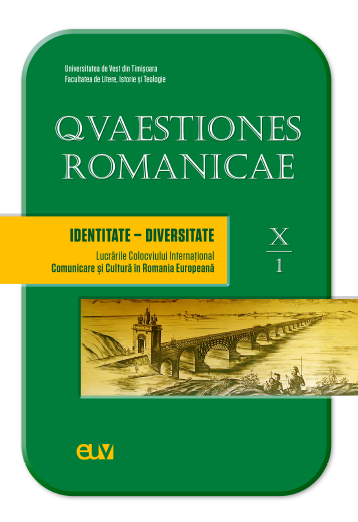Identitatea pianistului acompaniator, partener de dialog muzical în formații camerale diverse
Abstract: (The identity of the accompanist pianist, musical dialogue partner in various chamber ensembles) Both in instrumental chamber music formation and alongside vocal artists, the contribution of the accompanying pianist is reflected in every moment, by shaping the harmonic foundation and completing the song, in order to achieve the dialog between the two performers. The defining role of the pianist begins in the rehearsal room, a space for sharing the effort to decipher the score. In the chamber music duo ensemble, the complexity of the musical approach is reflected by the contribution of the two performers. Also, with the play of their own score, the two musicians focus on the dynamic adaptation of the melodic path to the accompaniment, roles which they adopt alternately. In instrumental chamber ensembles, the accompanying pianist treats the dynamic-timbre ratio between piano and string instruments differently, as opposed to the duo in which he evolves alongside wind instruments. In the interpretation of the written works for voice and piano, the text put on music becomes the main source of expression of the affections embedded in the notation of the score. The role of the accompanying pianist in the relationship with the vocal performer also takes place semantically, and the dialog between voice and piano is enhanced by the correct pronunciation of the text. At the same time, the melodic approach is interdependent with the lyrics it accompanies. Regardless of the partner with whom he evolves, the accompanying pianist contributes fully to the realization of a homogeneous chamber music ensemble, in which the two musicians return to the public the intentions of the composer, completed by their own feelings.
Keywords: chamber music, accompaniment, harmony, instrument, voice.
Rezumat: Atât în formație camerală instrumentală, cât și alături de artiști vocali, aportul pianistului acompaniator se reflectă în fiecare clipă, prin conturarea fundamentului armonic și completarea melodiei, în scopul realizării dialogului dintre cei doi interpreți. Rolul definitoriu al pianistului începe în sala de repetiție, spațiu de împărtășire a strădaniei de descifrare a partiturii. În formațiile camerale de duo, complexitatea demersului muzical se reflectă prin contribuția celor doi interpreți. De asemenea, odată cu redarea propriei partituri, cei doi membri ai formației se concentrează asupra adaptării dinamice a parcursului melodic la acompaniament, roluri pe care le adoptă alternativ. În ansamblurile camerale instrumentale, pianistul acompaniator tratează în mod diferit raportul dinamico-timbral dintre pian și instrumentele cu coarde, spre deosebire de duo-ul în care evoluează alături de instrumente de suflat. În interpretarea lucrărilor compuse pentru voce și pian, textul pus pe muzică devine sursa principală de expresie a afectelor încastrate în notația partiturii. Rolul pianistului acompaniator în relația cu interpretul vocal se desfășoară și pe plan semantic, iar dialogul dintre voce și pian este potențat de pronunția corectă a textului. În același timp, demersul melodic se află în relație de interdependență cu versurile pe care le însoțește. Indiferent de partenerul alături de care evoluează, pianistul acompaniator contribuie din plin la realizarea unui ansamblu cameral omogen, în care cei doi muzicieni restituie publicului intențiile compozitorului, completate de propriile lor trăiri și sentimente.
Cuvinte-cheie: muzică de cameră, acompaniament, armonie, instrument, voce.
